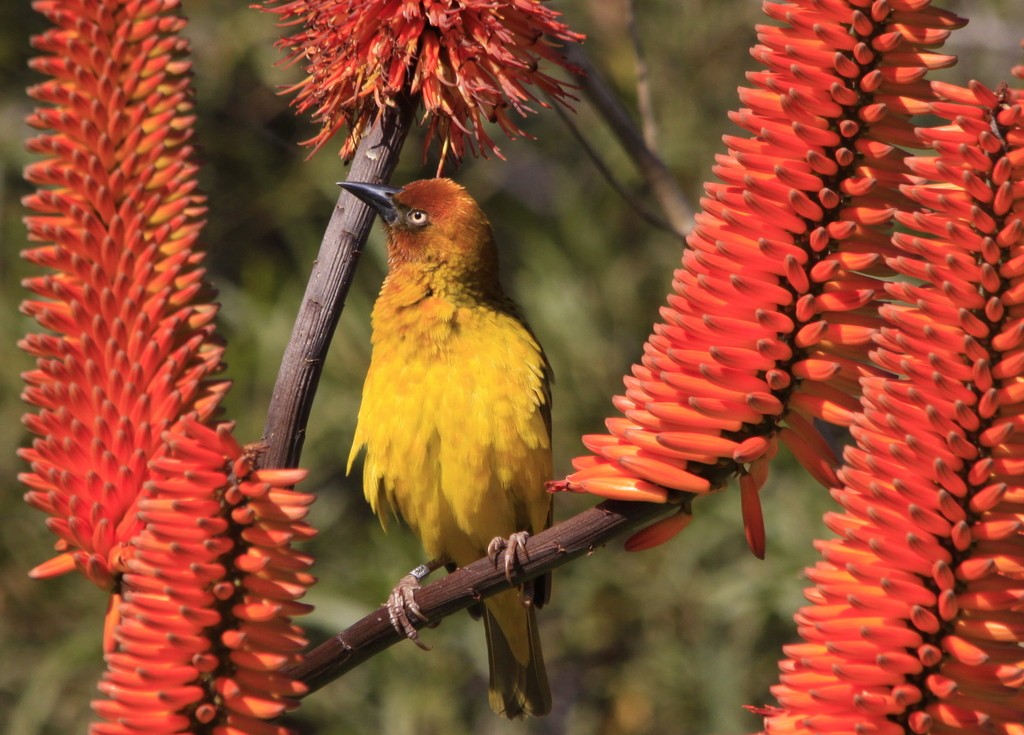Cape Weaver
A species of Typical weavers Scientific name : Ploceus capensis Genus : Typical weavers
Cape Weaver, A species of Typical weavers
Botanical name: Ploceus capensis
Genus: Typical weavers
Content
Description General Info
Description
The Cape weaver is a stocky 17 cm long bird with streaked olive-brown upperparts and a long pointed conical bill. The breeding male has a yellow head and underparts, an orange face, and a white iris. The adult female has an olive-yellow head and breast, shading to pale yellow on the lower belly. The female's eyes are brown, but 19% have pale eyes in summer and thus eye colour alone cannot be used to determine the sex. Young birds are similar to the female. 
Size
18 cm
Colors
Brown
Black
Green
Yellow
Bronze
Gray
Life Expectancy
14.92 years
Nest Placement
Tree
Feeding Habits
Cape Weaver is an omnivore, balancing its diet between animal matter like insects and spiders, and plant foods such as seeds, fruits, and nectar. Cape Weaver forages on the ground, in trees, and in the air with a bill suited to variety, and shows sexual dietary divergence. They are significant pollinators of aloes in their habitat.
Habitat
Cape Weaver's natural habitat encompasses open regions with sporadic trees and water availability. They thrive in grasslands, lowland fynbos, coastal thickets, and agricultural areas, avoiding dense forests and deserts. In arid zones, they seek mountainous environments with ample water and flora. Cape Weaver adapts to various exotic trees in elevations up to 2000 meters for sustenance and nesting.
Dite type
Granivorous
General Info
Feeding Habits
Bird food type
Behavior
When not breeding the Cape Weaver forms flocks, and it congregates in large roosts throughout the year, these may be shared with other birds, including other species of weavers. In some areas they desert the breeding colonies, returning at the commencement of the following breeding season. Anting has been observed and these birds bathe, even in rain or mist. 
Distribution Area
The Cape weaver is endemic to South Africa, Lesotho and Swaziland, occurring across much of the area excluding the Kalahari Desert from the Orange River in the Northern Cape south to the Cape of Good Hope then east to northern KwaZulu Natal and inland almost to Bloemfontein in the Orange Free State. The Cape weaver occurs in open grassland, lowland fynbos, coastal thicket and farmland, so long as there is permanent water and trees. In the more arid, hotter regions it is restricted to upland areas and it never occurs in forest. 
Species Status
Not globally threatened.
Scientific Classification
Phylum
Chordates Class
Birds Order
Perching birds Family
Weavers Genus
Typical weavers Species
Cape Weaver 